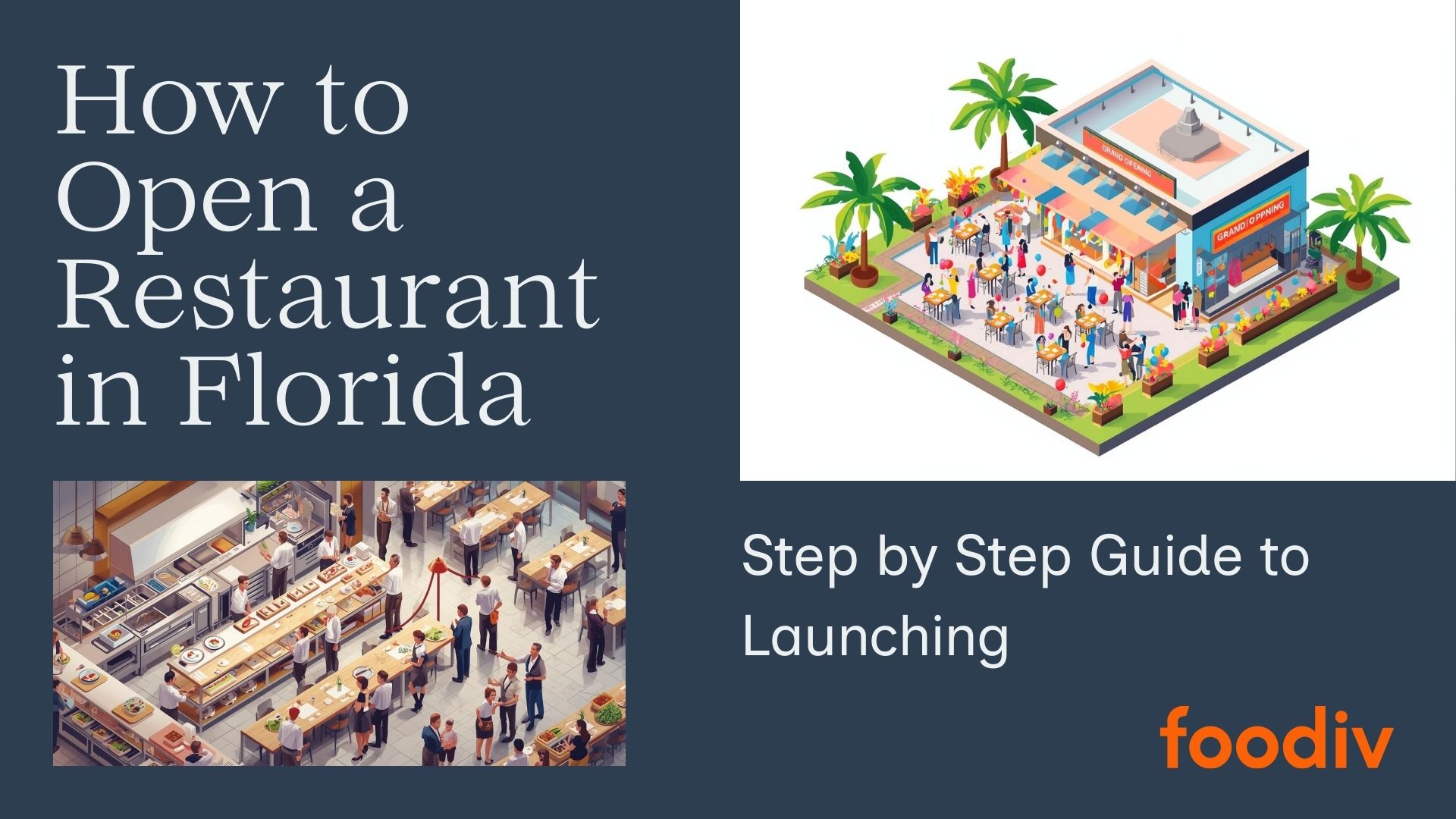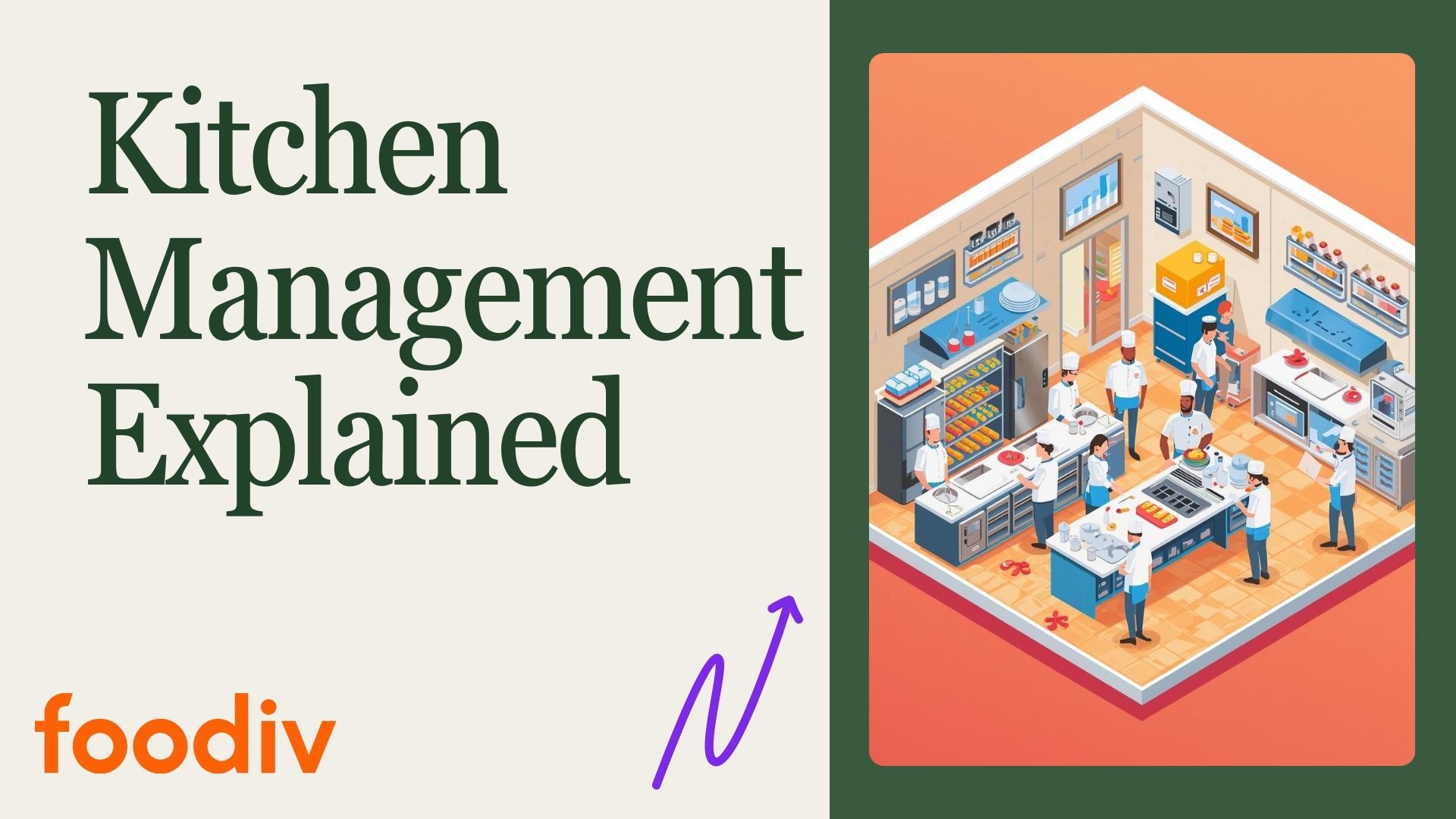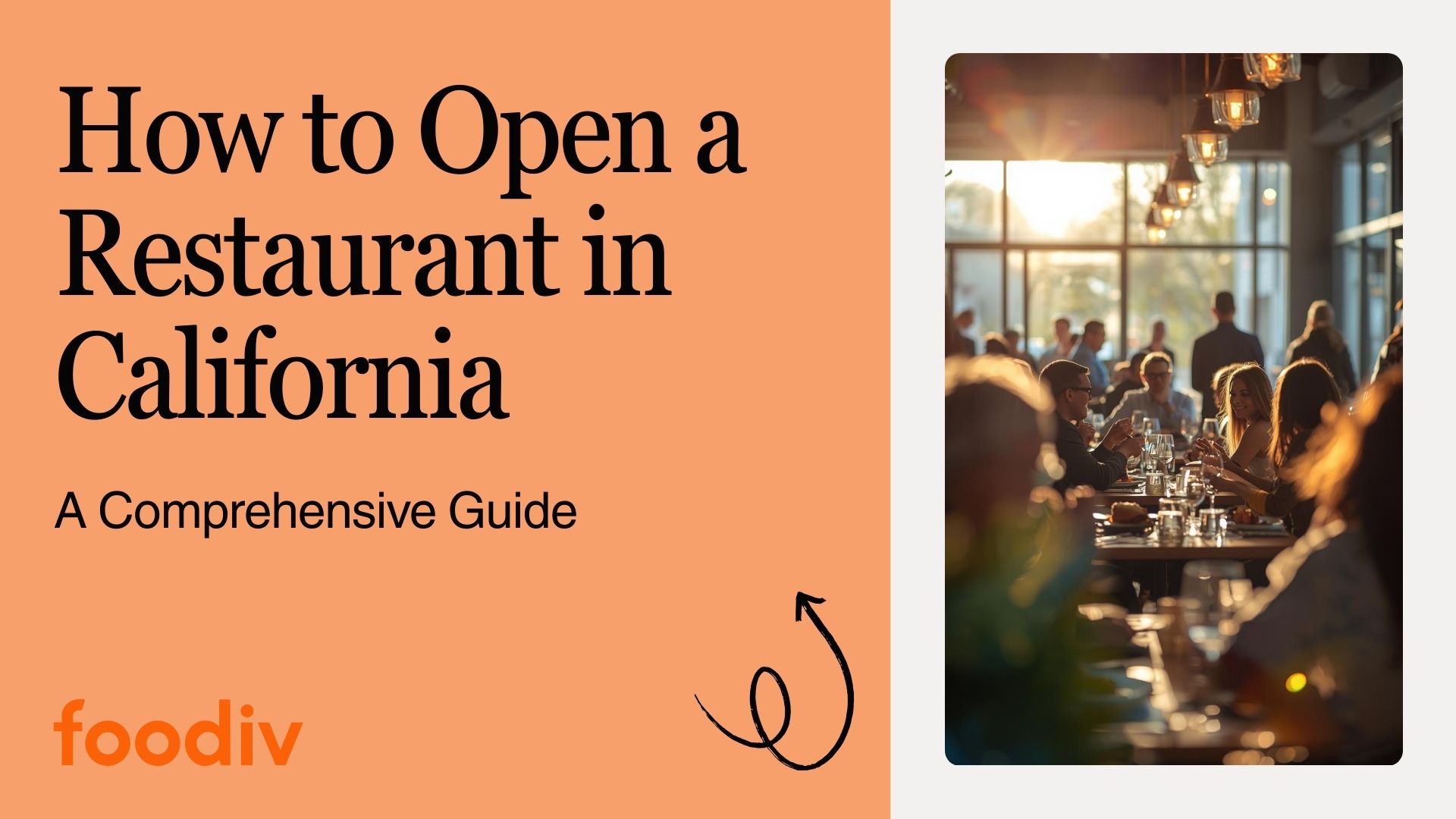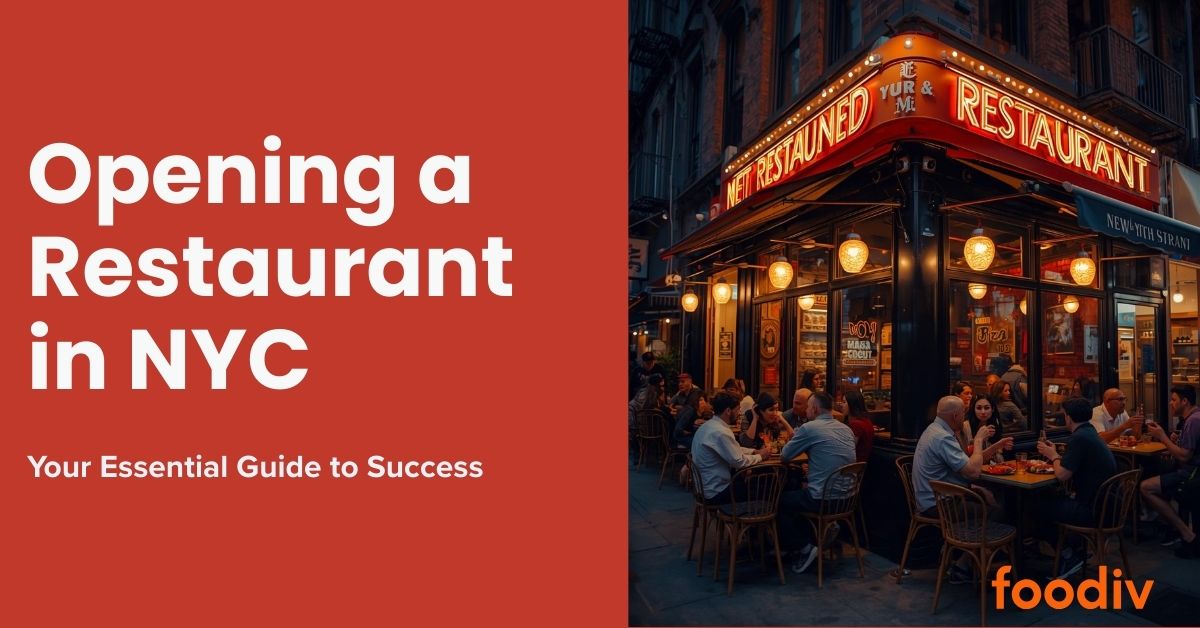
Summary: Are you considering opening your own restaurant? You must be looking for a reliable and perfect restaurant business plan to visualize your idea into a successful business. If yes, creating an effective business plan is the way to go. This article will introduce how to create a restaurant business plan and the top elements of it. Let’s explore.
“Your work is going to fill a large part of your life, and the only way to be truly satisfied is to do what you believe is great work. And the only way to do great work is to love what you do.” – Steve Jobs.
Yes, true. If you believe you are passionate about serving people, the restaurant business is one area for you. But your goal must have a plan, or it’s just a wish. When starting a restaurant, you need to create an effective business plan to forecast every element of the restaurant business. It helps you set goals and attract investors to make informed decisions and financial planning.
In this article, we are going to discuss how to write a compelling restaurant business plan to foresee your restaurant business success. We will discuss all its elements along with some basics. The points we are going to discuss in this business plan for the restaurant include the following;
- The Importance of a Restaurant Business Plan
- Top Components of Restaurant Business Plan
These two points will cover all your queries related to the business plan for the restaurant. Let’s explore each point in detail:
The Importance of a Restaurant Business Plan
First thing first, if you are a startup and need funding, you cannot go to investors or banks without a proper restaurant business plan. In other words, a restaurant business is crucial as it helps you;
- Increase chances of success
- Create a roadmap and follow
- Set benchmark
- Assess the progress
- Guides financial and operational decisions
Second, when you start your restaurant with a proper business plan, it helps you beat the difficult times. Many restaurants fail, and most of them are those who did not start restaurants with plans. In short, if you don’t know where you are going, you will end up somewhere else.
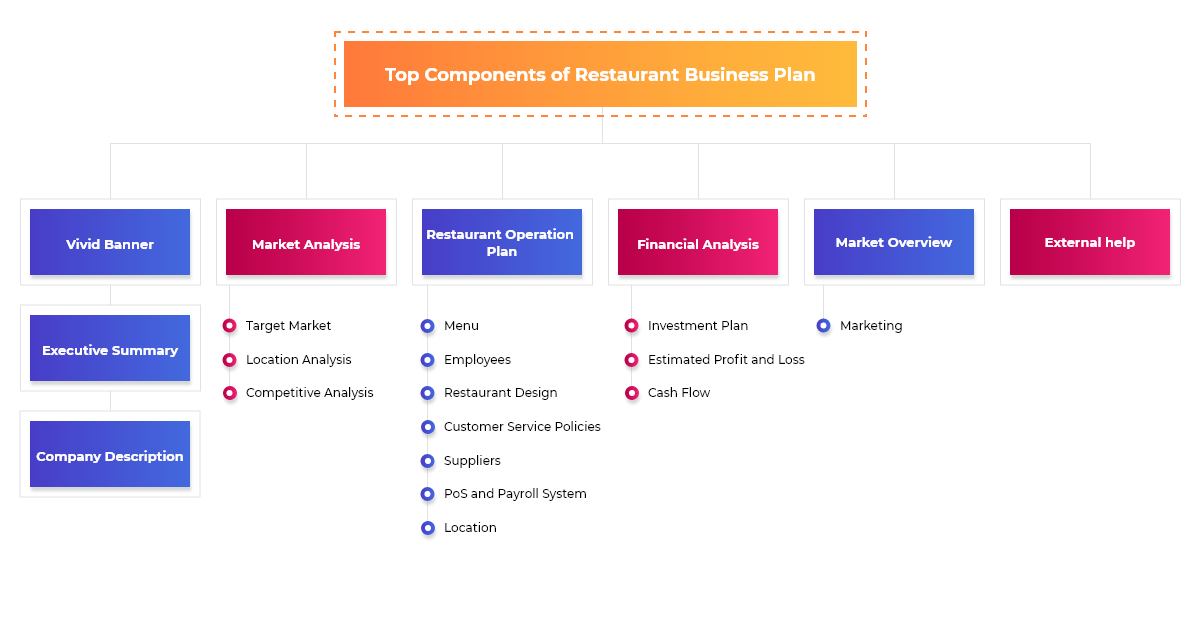
You May Also like to Read
Besides, at the initial stage, when you are completely stressed with construction, licensing, staffing, and other stuff, the business plan for the restaurant will help you stay focused by showing you a clear roadmap. If you move ahead with no business plan, you might mess things up and end up starting a restaurant business that will be much tougher to negative.
Top Components of Restaurant Business Plan
A most celebrated American entrepreneur once mentioned that “Good business planning is 9 parts execution for every 1 part strategy.”
Every element in the business plan for the restaurant is interdependent. You cannot assume the success of one part while ignoring the other. You need to take every step —all the elements of a business plan seriously to get comprehensive success.
You can easily find templates for business plans online, and you can create them yourself. You will get all the sections that cover everything related to your business. All you need to know is how to write a restaurant business plan. Start by finding a restaurant business plan template and create your business plan one by one. Here’s what you need to do.
Creative Banner
You must have gone through online resources to found out how to start a restaurant business plan. The first page of the business plan for the restaurant should resemble your brand’s name with a logo and tagline. That means the cover page should begin with;
- Your restaurant name
- Restaurant punchline/tagline
- Logo of your brand
- Matching fonts
- All the relevant contact information
Executive Summary
The restaurant executive summary creates the first best impression that captures the reader’s attention. It must be appealing enough to let investors and readers feel invested in your idea. Hence, the executive summary should include;
- About your business (explain briefly)
- What problem will your business solve
- Who are your target audiences/customers
- Proposed concept
- How will you execute the plan
- How much do you need to invest to achieve your goal
- The anticipated return on your investment
You need to brainstorm a little to get these details, though you can take expert help.
Company Description
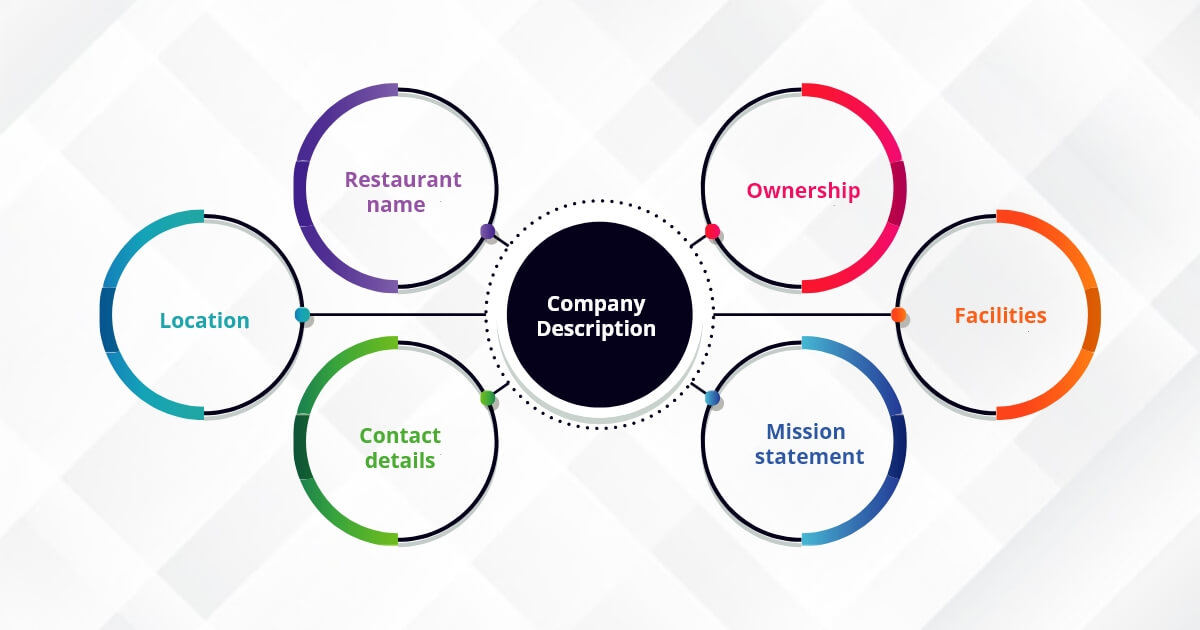
A company overview, aka company information or a company summary, appears after the executive summary, albeit the most crucial elements even if you create a small restaurant business plan. This section provides comprehensive details about your restaurant and team structure, the owner’s history, location, and more. Hence, the company overview should include;
- The restaurant name you are opening
- The location of the restaurant
- Contact details
- Management team
- Legal structure and ownership
- Facilities
- Mission statement
In this part, you can explain your restaurant in detail. For example, it should include your mission, vision, and purpose.
You may explain the background of the owner, highlighting his/her unique quality. Meanwhile, highlight the competitive advantage that gives clear insight into how your restaurant business will be successful.
Market Analysis

In this section, you need to provide your business visibility, which can be fulfilled by giving solid market research for the restaurant business plan.
Target Market: What is the target market and demographics your restaurant business will cater to? To whom will you sell your products and services? Validate your concept with market research.
Competitive Analysis: Write down the names of the top competitors in the region. Explain the existing competitive landscape in the area and what will make your customers choose you over the others.
SWOT Analysis: SWOT analysis refers to Strengths, Weaknesses, Opportunities, and Threats. That means you need explain adequately;
- “S” stands for the strengths that will lead customers to choose over the others
- “W” stands for the weaknesses, which will be the key focus line to improve
- “O” stands for the opportunities that will help you cover the market and grab attention
- And “T” stands for threats — the possible threats that you need to keep your restaurant away from
Restaurant Operation Plan
Now, you need to visualize how the restaurant will operate day-to-day once the plan is executed. That means you need to give a complete plan for your restaurant operations, and that should include;
- Menu
- Staffing
- Restaurant Design
- Customer Service Policies
- Suppliers
- PoS and Payroll System
- Location
Showcase Menu with Pricing
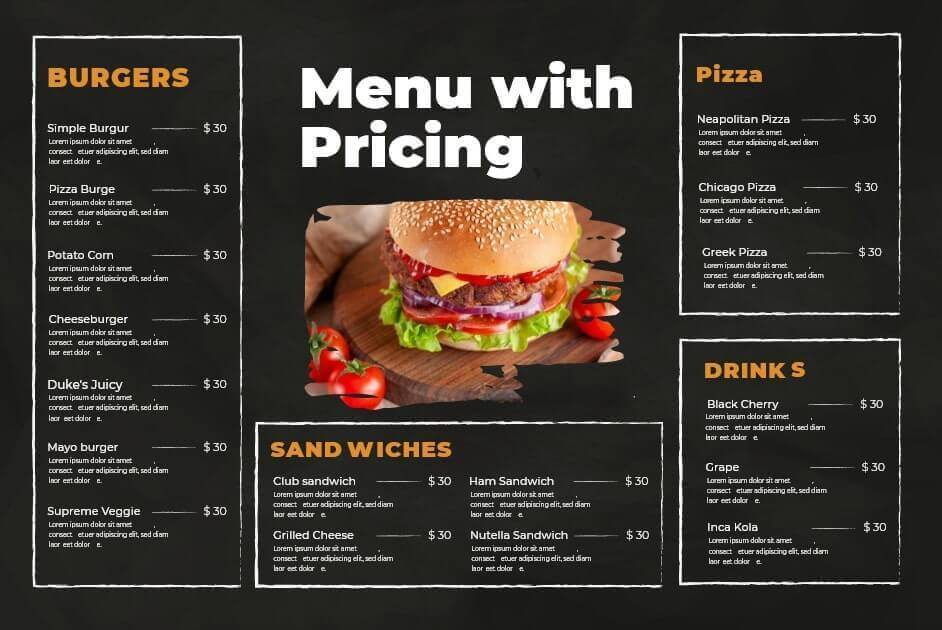
Showcase the list of the menu —what you serve. No doubt, initially, you may not have the final version of the menu list, but you can try to include a mock-up. That means including the main menu items with the appropriate design and logo.
If you have a technology partner to help you create a digital platform for your restaurant business, you can ask the designer to create a menu design. Or, you can use online tools to create one. Make sure the mock-up menu showcases the price for each menu item and reflects the cost analysis. It will help investors understand your concept clearly.
Must Read: How to Create a Restaurant Menu
Staffing Structure
You have already briefly introduced owners in the ‘Company Description’ section. Now, you need to give a detailed description of the complete staffing plan, as shown in the image below.
Restaurant Staffing Structure
- Managerial Staff
- Kitchen Staff
- Floor Staff
- Bartenders
- Delivery Staff
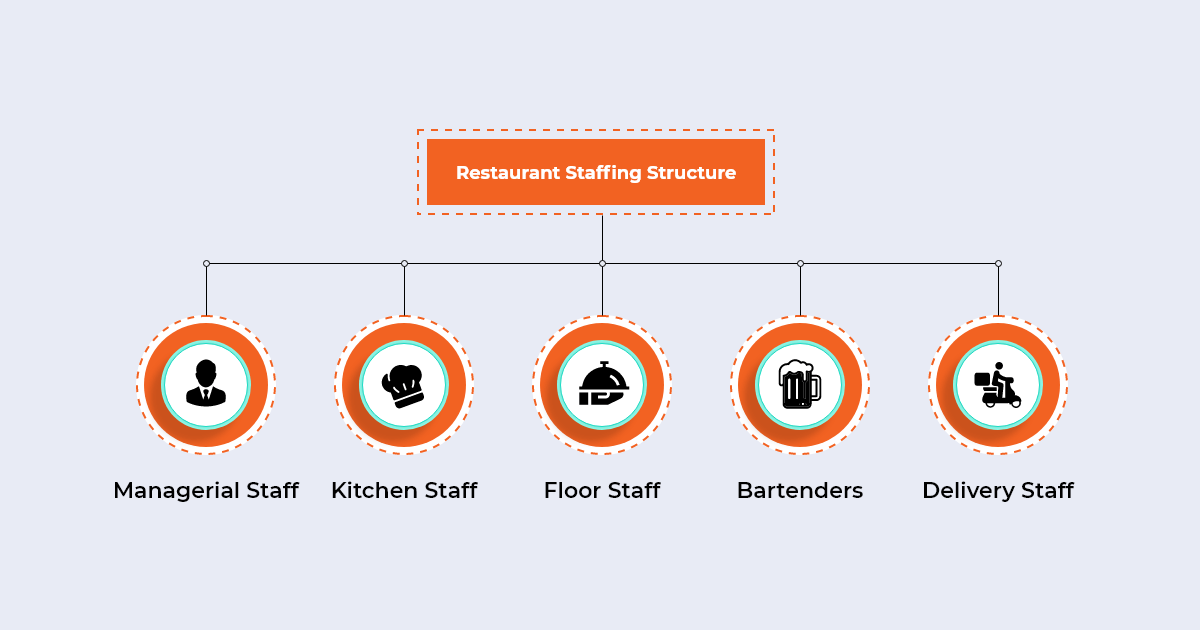
Based on the restaurant concept, you need to design the staffing structure, and it can differ from one restaurant to another.
Restaurant Design
It’s primarily your thoughts and ideas that you can show to your investors by creating exciting designs for your restaurants. Don’t worry if you don’t have a mock-up already. Create a Mood Board instead of intimating similar aesthetics to your vision. Try including even the smallest details of your restaurant software or kitchen equipment.
Customer Service Policies
Describe how you expect to provide excellent guest experiences consistently. The plan must include your Restaurant’s Values, various Procedures, and policies. Also, mention how you plan to implement them. You can explore your competitors and analyze restaurant business plan samples to understand better.
Suppliers

Enlisting your suppliers is necessary. Note where you will get the ingredients from, even the replenishing ones. List down supplier names from whom you’ll purchase equipment, including the one-time purchases.
POS and Payroll System
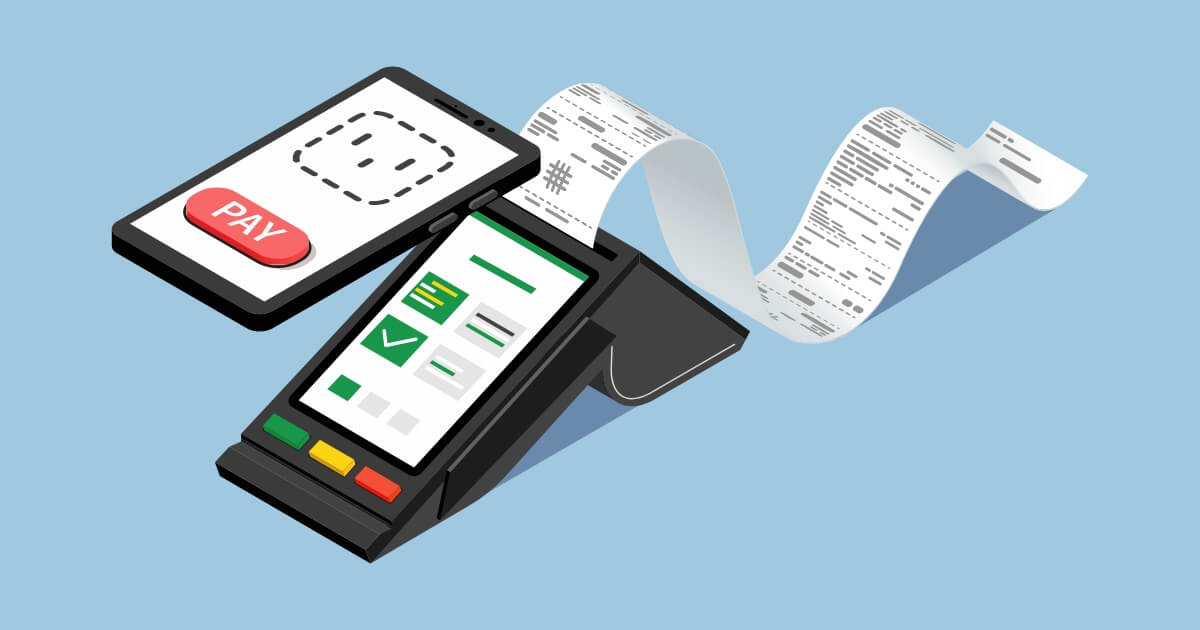
Plan how you will track the inventory and sales, make deliveries, and arrange takeout. Along with Restaurant point of sale management, extensively plan out your cash control, payroll process, and even the procedure of accepting various payment types. You can also mention if you have considered shifting from your offline restaurant to a digital platform or integrating an online food ordering system.
Location
Choose the location that befits your target audience. It’s okay if you don’t have a precise location decided yet. Write a few locations that are on your mind at the moment. While describing the Restaurant Location to the investors, mention each possible plus point, including typical demographics and square foot area.
Financial Analysis

Finances hold their own importance in a Business Plan for the restaurants So, hiring a Professional and experienced Accountant will help you plan out this section in the best way. They’ll give you real-market insights and provide financial estimates about restaurants, food costs, and even the profit margin per dish you serve in a day.
Investment Plan
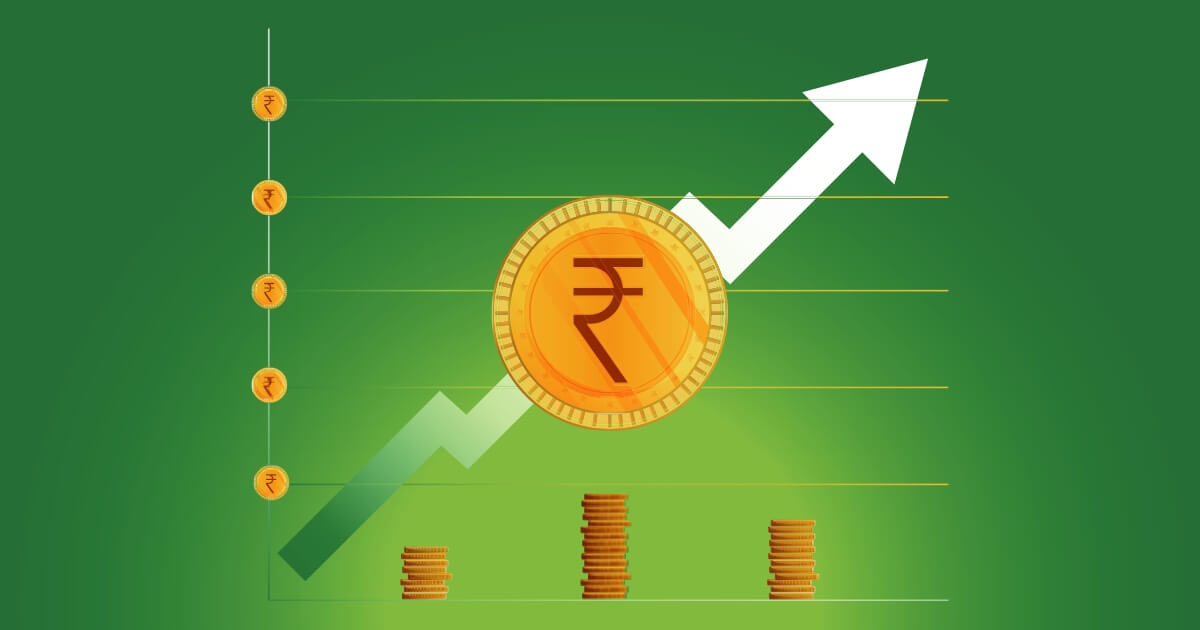
In this section of your Business Plan, tell your investors how much you hope to receive and how you intend to spend their money in the initial years of operations. Mention investments in kitchen equipment, interior, legal fees, payroll, and your working capital.
Estimated Profit and Loss
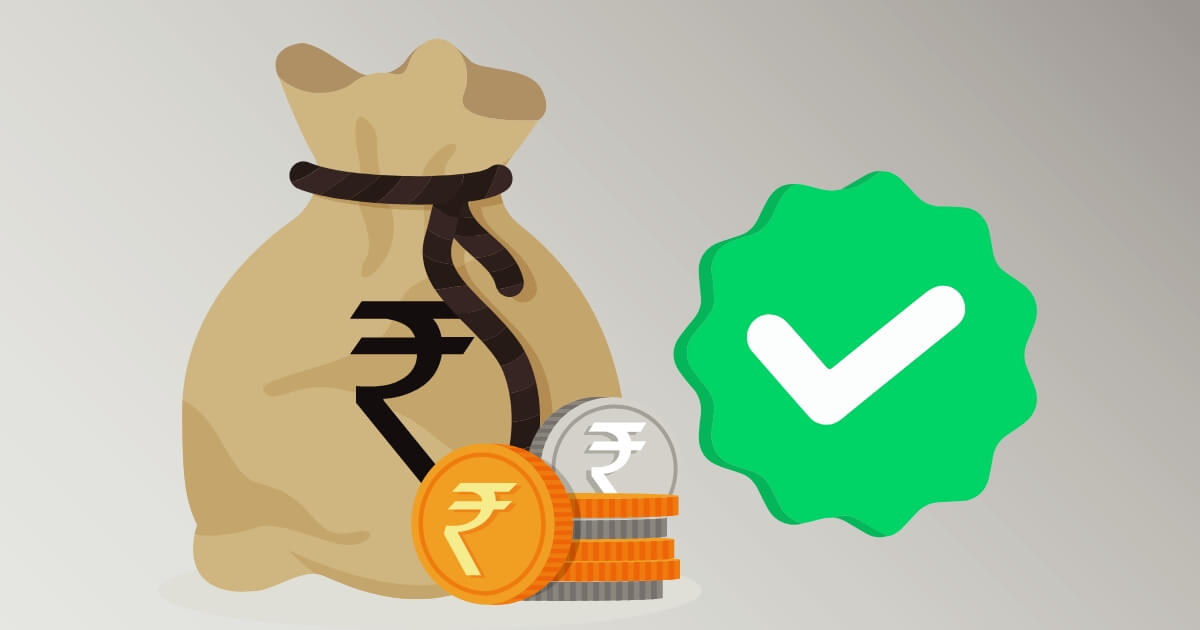
It is here where you need to make educated guesses about your business’s profits and losses since the plan is made even before the establishment of your Restaurant. While estimating the costs, consider:
- Restaurant Size
- Target Market
- Existing Market at your chosen location
Cash Flow
The cash flow analysis will help your investors understand how much cash flow you are expecting. The cash flow often depends on your inventory purchases and payrolls. To be honest, some months will be less fruitful. At that time, this cash flow plan will come in handy.
Market Overview
This is where you will provide a solid marketing plan after rigorously researching the market. This section includes information about the target market, SWOT Analysis, Competition Analysis, how your product/service will help the audience, and your market size.
Marketing

Here, talk about your marketing campaigns and strategies. Explain how you will market the restaurant and capture the market share. While you’re at it, include what offers you will provide to your customers to attract and retain them.
Include even the smallest details!
External help
To make your restaurant come to reality, you will need help from many. So, list down all external companies and individuals you’ll take help from. Mention the software you will use to kickstart your Restaurant’s operations. Introduce every accountant, designer, supplier, or any other entity that will help your business perform better.
Explain the importance of each and every one to your investors. Elaborate on how they’ll help you keep the Restaurant up and running.
You May Also like to Read
Final Thoughts
Building a business plan is not as complex as we think. You can find restaurant business plan templates and create. However, you need to understand what to write in each section to make it compelling to woo your investors. We are sure this article gives you a comprehensive understanding of how to create a business plan for a restaurant. Meanwhile, if you need to understand this in detail, we can help you from start to finish. For example, we as a team will help you create restaurant business plans, implement them, build digital solutions, and connect with your investors and your customers. Let’s connect.
FAQ About Restaurant Business Plan
What should be in a restaurant business plan?
First, include all the elements that we have explained in this article. Briefly, it should include;
- Executive summary.
- Restaurant description.
- Sample menu.
- Target market analysis.
- Marketing plans and competitor analysis.
- Organizational management.
- Financial projections.
- And more than we explained in this article.
Why is a business plan important for a restaurant?
With a concrete restaurant business plan, you not just have a roadmap to follow, but also set restaurant business benchmarks and assess the progress. Besides, your restaurant business idea gets validated with clear potentials and also with partners.
What are the main activities of a restaurant?
In a restaurant, you have pre-defined activities that include;
- Preparing food.
- Serving customers.
- Buying raw food materials.
- Offer food delivery.
- Maintaining food hygiene.
- Staff management.
- Account management.
How do restaurants run efficiently?
You can take certain measures to ensure your restaurant business runs efficiently. For example;
- You are offering healthy and quality food.
- Customer service is on time.
- Storefronts, such as reception areas, kitchen layout, etc., are visually appealing.
- Welcome feedback.
How can I improve my restaurant?
There are certain ways in which you can improve your restaurant.
- Maintain the quality of food and services
- Take care of your team, and keep them happy
- Take care of space management
- Offer online food delivery and food ordering facility
- Maintain food menu


